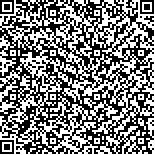| 摘要: |
| 报道了2012 年6 月份桑沟湾藻华期间的浮游植物和纤毛虫群落结构, 并对环境因子进行了初步分析。研究发现, 藻华原因种为一种直径为2 μm 左右的小球型藻类, 细胞形态和粒径均与近年来在中国秦皇岛近岸海域频繁引发水华的超微型浮游植物相似。藻华发生期间, 调查区海水中藻华原因物种细胞丰度高达109个/L, 高于2011 年同期调查区该物种藻华期间的细胞丰度(108个/L)。除藻华原因种外, 其他浮游植物共鉴定38 种, 隶属3 门23 属, 以硅藻和甲藻为主, 优势种为: 具槽帕拉藻(Paralia sulcata)、裸甲藻(Gymnodinium sp.)、圆筛藻(Coscinodiscus sp.)、长菱形藻(Nitzschia longissima)和太平洋海链藻(Thalassiosira pacifica)等。纤毛虫共鉴定3 属5 种, 以砂壳纤毛虫为主, 优势种为百乐拟铃虫(Tintinnopsis beroidea)。细胞丰度分布方面, 藻华原因种从湾内向湾外逐渐降低; 硅藻细胞丰度在位于湾口处的6 号站位最高, 并向湾内和湾外递减; 甲藻和纤毛虫细胞丰度均从湾内向湾外降低, 这分别由优势种裸甲藻和百乐拟铃虫的分布决定。分析发现, 调查区藻华原因物种细胞丰度与海水温度和层化系数呈良好的正相关性, 与盐度呈负相关性; 与裸甲藻和百乐拟铃虫细胞丰度呈良好的正相关性, 这两种异养微型浮游生物对藻华原因种的摄食能力值得探索。与历史资料的对比发现, 调查区藻华期间浮游植物群落多样性下降, 群落稳定性降低。 |
| 关键词: 褐潮 浮游植物 纤毛虫 群落结构 夏季 桑沟湾 |
| DOI:10.11759/hykx20140325001 |
| 分类号: |
| 基金项目:国家自然科学基金项目(41176136, 41576164); 天津市沿海赤潮及污染浮游指标物种研究(12JCZDJC30100); 国家重点基础研究发展计划项目(2011CB409804) |
|
| Effects on phytoplankton and ciliate communities during the 2012 picophytoplankton brown tide in Sanggou Bay, China |
|
|
| Abstract: |
| The phytoplankton and ciliate communities in Sanggou Bay during an algae bloom in the summer of 2012 were investigated, and a preliminary analysis of the relationship between algae bloom causing species (ABCS) and environmental factors was performed. The ABCS was a coccoid-like picophytoplankton with a diameter of approximately 2 μm. Its cell abundance in surface waters reached 109 cells/L, which was higher than its cell abundance during the 2011 bloom period in Sanggou Bay. This ABCS is quite similar to another picophytoplankton species, which frequently blooms as a brown tide in Qinhuangdao coastal waters. Besides the predominant species, a total of 38 phytoplankton taxa belonging to three phyla and 24 genera were identified as co-existing phytoplankton. The Bacillariophyta and Pyrrophyta dominated the phytoplankton community, and the dominant species were Paralia sulcata, Gymnodinium sp., Coscinodiscus sp., Nitzschia longissima, and Thalassiosira pacifica. Meanwhile, five planktonic ciliate species in three genera co-existed in the microzooplankton assemblage. The Tintinnids, were dominant and the most common species encountered was Tintinnopsis beroidea. The cell abundance of the ABCS decreased from the inner bay to the outer bay, and the diatoms cell abundance reached a peak at station six. The cell abundance of dinoflagellates and ciliates decreased from the inner bay to the outer bay, which was consistent with the distribution pattern of Gymnodinium sp. and T. beroidea. A correlation analysis revealed that the cell abundance of ABCS was positively correlated with temperature and the stratification index, and negatively with salinity. The cell abundances of Gymnodinium sp. and T. beroidea were positively correlated with ABCS, and the ingestion ability of these two heterotrophic protists on ABCS deserves further research. The phytoplankton species diversity during the bloom period was obviously lower than that in a non-bloom period, indicating that the brown tide had a negative impact on the stability of the phytoplankton community in Sanggou Bay. |
| Key words: Brown tide, Phytoplankton, Ciliate, Community, Summer, Sanggou Bay |
